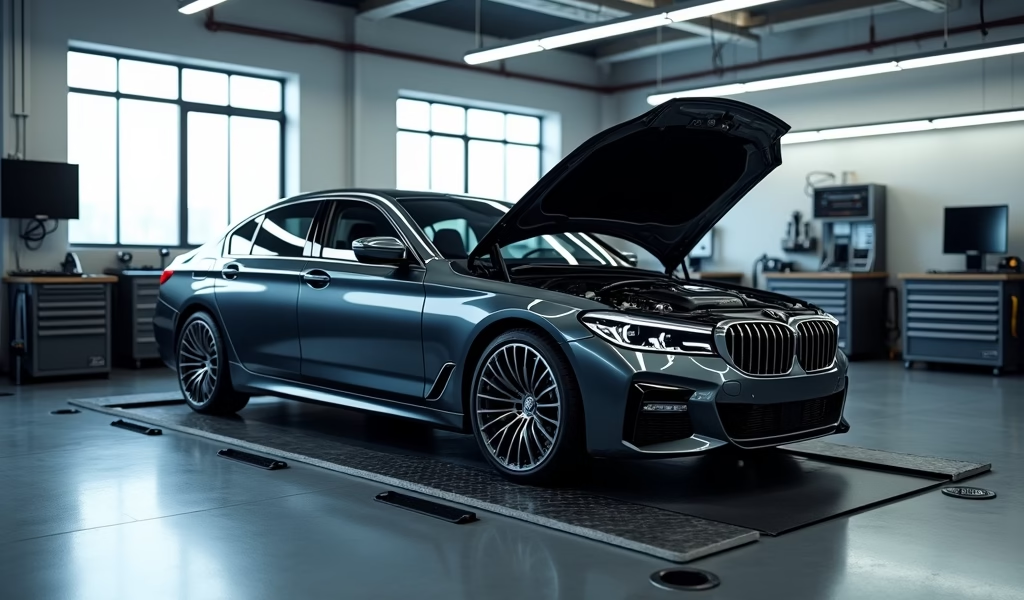Overview
This article provides a detailed guide to buying a car, covering needs assessment, research, test driving, negotiation, financing, and ongoing maintenance from a mechanic with 25 years of experience. The author emphasizes a methodical approach focused on thorough preparation and patience throughout the car-buying process, while offering practical advice to help readers make informed decisions and avoid common pitfalls.
Table of Contents
- Understanding Your Needs and Budget
- Research Is Key: Do Your Homework
- Test Drive Tips: Beyond the Basics
- Negotiation Strategies That Actually Work
- Financing Options: Making Smart Money Decisions
- After-Purchase Care: 5 Proven Car Care Tips
- Conclusion
- Frequently Asked Questions
Buying a car isn’t just a transaction—it’s a relationship that begins the moment you sign those papers. After spending 25 years under the hood and guiding countless folks through the car buying process, I’ve learned that how to buy a car involves much more than just walking into a dealership with a checkbook. It’s about understanding what you need, knowing what questions to ask, and being prepared for both the purchase and the long-term care of your vehicle.
I’ve seen too many people drive off the lot with buyer’s remorse because they rushed through the process. Whether this is your first vehicle or your fifteenth, the approach should be methodical, informed, and patient. Let’s break down this journey into manageable steps that will help you drive away confident in your decision.
Understanding Your Needs and Budget
Before you even think about makes and models, take a moment to assess what you actually need. Are you commuting solo on highways, or hauling kids and sports equipment to weekend games? Do you need four-wheel drive for those snowy mountain roads, or is fuel efficiency your priority for that daily 50-mile commute?
Write down your non-negotiables. For some, it’s safety features like advanced driver assistance systems. For others, it’s cargo space or towing capacity. Be honest about what matters most to you—this is the foundation of a satisfying purchase.
Now, let’s talk numbers. Your budget isn’t just the sticker price—it’s a comprehensive calculation that includes:
- Monthly payments (if financing)
- Insurance costs (which vary significantly by vehicle type)
- Expected fuel expenses
- Maintenance and repairs
- Registration and taxes
A common rule of thumb: your monthly car expenses shouldn’t exceed 15-20% of your take-home pay. This includes payment, insurance, gas, and maintenance. Staying within this range helps ensure your car enhances your life rather than becoming a financial burden.
Remember, some vehicles might seem affordable at purchase but cost significantly more over time. According to Consumer Reports’ reliability studies, certain models consistently require fewer repairs in their first five years. This kind of research pays dividends down the road—quite literally.
Research Is Key: Do Your Homework
I can’t tell you how many customers have slid into the driver’s seat with nothing more than a color preference and a vague budget. Let me be clear: those who research thoroughly almost always drive away happier with their purchase.
Start by narrowing your options to 3-5 models that meet your primary needs. Then dive into the specifics:
- Reliability ratings from multiple sources
- Common problems reported by owners
- Typical maintenance schedules and costs
- Real-world fuel economy (not just the EPA estimates)
- Safety ratings and available safety features
- Resale value trends
Don’t just rely on manufacturer websites—they’re designed to sell you something. Instead, check independent reviews from automotive journalists, consumer advocacy organizations, and especially owner forums. Those who live with these vehicles daily will tell you things no salesperson ever will.
While researching, pay particular attention to the process of buying a car specific to your chosen models. Some brands are known for no-haggle pricing, while others typically involve significant negotiation. Understanding these differences prepares you for what’s ahead.

Test Drive Tips: Beyond the Basics
A test drive isn’t just about seeing if you like how a car feels—it’s your diagnostic session. As a mechanic who’s helped numerous customers evaluate potential purchases, I can tell you most people don’t test drive properly.
First, schedule your test drive for daylight hours and allow at least 30-45 minutes per vehicle. Bring along your typical cargo (child seats, sports equipment, etc.) to ensure everything fits comfortably.
During the drive, follow this checklist:
- Drive on various road surfaces (highway, city streets, rough pavement)
- Test acceleration by merging onto highways
- Evaluate braking response at different speeds
- Check visibility in all directions
- Assess noise levels at highway speeds
- Try parking in tight spaces
- Test all major features and controls
Listen carefully for unusual sounds. A new car should drive smoothly with minimal noise. Any knocks, rattles, or vibrations are red flags that shouldn’t be ignored, even on a brand new vehicle.
Don’t be rushed. A good salesperson will encourage you to experience the vehicle thoroughly. If they’re pressuring you to wrap up quickly, consider it a warning sign about their business practices.
And here’s something most salespeople won’t tell you: request the vehicle’s maintenance records if it’s pre-owned. I’ve seen too many customers skip this crucial step and later discover hidden issues that could have been avoided.
Negotiation Strategies That Actually Work
After 25 years in the automotive industry, I can tell you negotiation isn’t about confrontation—it’s about preparation. Walking in with solid research gives you tremendous power.
First, understand the numbers. There are several key figures in play:
- MSRP (Manufacturer’s Suggested Retail Price)
- Invoice price (what the dealer paid, roughly)
- True market value (what others in your area are paying)
- Trade-in value of your current vehicle (if applicable)
Armed with this information, you’re ready to negotiate effectively. Start by getting offers from multiple dealerships. This creates competition and gives you leverage. Online price requests make this easier than ever.
When discussing price, focus on the “out-the-door” total, which includes all taxes, fees, and add-ons. This prevents the common bait-and-switch where the advertised price sounds great until numerous fees are added.
A technique I’ve seen work repeatedly: negotiate each aspect separately. Discuss the vehicle price first, then your trade-in (if applicable), and financing terms last. This prevents dealers from juggling numbers between categories to confuse you.
Be willing to walk away. It sounds cliché, but it’s your strongest negotiating tool. When a dealer knows you’re prepared to leave, they’re more likely to offer their best terms. Remember, there are plenty of cars and dealers out there—don’t get emotionally attached to a specific vehicle before signing the papers.
One more crucial tip: always review the final paperwork carefully before signing. I’ve had customers who discovered unexpected additions or missing promised features only after taking the time to read the contract thoroughly.
Financing Options: Making Smart Money Decisions
Financing is where many car buyers lose thousands without realizing it. Let me share some insider knowledge about making smart money decisions when purchasing a vehicle.
Before stepping foot in a dealership, get pre-approved for a loan through your bank or credit union. This accomplishes two things: it establishes your budget firmly, and it gives you a competitive rate to compare against dealer financing offers.
Understanding loan terms is crucial. Focus not just on the monthly payment, but on:
- Total interest paid over the life of the loan
- Loan duration (shorter terms mean higher payments but less total interest)
- Interest rate and APR (Annual Percentage Rate)
- Any prepayment penalties or hidden fees
Be cautious with extended warranties and add-ons. While some protection plans offer genuine value—especially for complex vehicles with advanced technology—many are overpriced. Research the actual cost of extended coverage from third-party providers and manufacturer programs before deciding at the dealership.
Consider the total cost of ownership when financing. A higher-priced vehicle with better reliability and fuel efficiency might actually cost less over five years than a cheaper alternative with higher operating costs. The Edmunds True Cost to Own calculator is an invaluable tool for these comparisons.
Leasing deserves a mention, though it’s right for some situations and wrong for others. If you enjoy having a newer vehicle every few years and don’t drive excessive miles, leasing might work well. However, if you tend to keep vehicles long-term or drive more than 12,000-15,000 miles annually, purchasing typically makes more financial sense.

After-Purchase Care: 5 Proven Car Care Tips
Congratulations on your new vehicle! Now comes the part many buyers overlook: proper care to protect your investment. As someone who’s rebuilt countless engines that failed prematurely due to neglect, I can tell you that maintenance isn’t just about keeping things running—it’s about preserving value and preventing costly repairs.
Here are my five non-negotiable car care tips that have saved my customers thousands over the years:
1. Follow the Maintenance Schedule Religiously
Your owner’s manual contains a maintenance schedule developed by engineers who designed your vehicle. This isn’t a suggestion—it’s a requirement for optimal performance and longevity. Mark these service intervals in your calendar the day you bring your car home.
Modern vehicles might go 7,500-10,000 miles between oil changes, but that doesn’t mean other maintenance items aren’t due. Transmission fluid, coolant, brake fluid, and other systems have their own schedules. Ignoring these intervals is like ignoring your doctor’s advice—the consequences catch up eventually.
2. Learn to Read Your Vehicle’s Signals
Every car communicates problems before they become serious. Unusual sounds, vibrations, warning lights, or changes in performance are all early warning signs. Don’t dismiss these signals or turn up the radio to drown them out.
Get familiar with your vehicle’s normal operating conditions—how it sounds, feels, and performs when everything is working properly. This baseline awareness helps you notice subtle changes before they develop into major issues. The car buying tips I provide always include learning your vehicle’s unique personality.
3. Practice Preventive Tire Care
Your tires are the only point of contact between your vehicle and the road. Their condition affects everything from fuel economy to safety. Check tire pressure monthly (including the spare), and always when temperatures change significantly.
Rotate tires according to your manual’s recommendations—typically every 5,000-7,000 miles. This ensures even wear and extends tire life substantially. While you’re at it, have the alignment checked annually or whenever you notice the vehicle pulling to one side.
4. Keep It Clean, Inside and Out
Regular washing isn’t just about appearances—it prevents premature corrosion, especially in areas where road salt is used. Pay special attention to wheel wells and undercarriage areas where moisture and debris collect.
Interior cleaning preserves materials and prevents premature wear. Vacuum regularly and protect dashboard and trim from UV damage with appropriate products. Address spills immediately to prevent staining or unpleasant odors that can be difficult to remove later.
5. Drive With Mechanical Sympathy
How you drive significantly impacts vehicle longevity. Allow your engine proper warm-up time before demanding full performance, especially in cold weather. Avoid prolonged idling, which creates carbon deposits and wears engine components unnecessarily.
Aggressive acceleration, hard braking, and taking corners at high speeds all accelerate wear on various systems. Smoother driving not only extends your vehicle’s life but also improves fuel efficiency and reduces maintenance costs.
Remember, every vehicle has its quirks and specific needs. Developing a relationship with a trusted mechanic who understands your particular model can provide personalized advice that generic tips can’t cover. Consider them a partner in maintaining your vehicle’s health.
Conclusion
Buying a car is a journey that extends well beyond the purchase date. By taking time to understand your needs, conducting thorough research, testing vehicles properly, negotiating effectively, securing smart financing, and committing to ongoing maintenance, you’re setting yourself up for years of satisfying ownership.
I’ve seen too many people rush through this process only to face frustration later. The extra hours invested upfront can save you thousands of dollars and countless headaches down the road. Remember that a vehicle is likely one of your largest investments—treat the process with the care it deserves.
Whether you’re looking at your first car or your fifth, the fundamentals remain the same. Be patient, be informed, and don’t compromise on what truly matters to you. After all, this vehicle will be your daily companion for years to come.
And when you finally drive off in your new (or new-to-you) vehicle, take a moment to appreciate the journey. Understanding how to buy a car properly isn’t just about making a good financial decision—it’s about finding the right partner for all your journeys ahead.
Frequently Asked Questions
When is the best time to buy a new car?
End of month, quarter, or calendar year when dealers are trying to meet sales quotas. You’ll often find more flexibility in pricing and better incentives during these periods.
Should I buy new or used?
New cars offer warranties and the latest features but depreciate quickly. Used vehicles offer better value if properly inspected, as someone else has already taken the initial depreciation hit.
How much should I put down on a car purchase?
Aim for at least 20% down to offset initial depreciation and reduce monthly payments. This helps ensure you won’t be “underwater” on your loan if you need to sell early.
Is it better to finance through a dealer or my own bank?
Get pre-approved through your bank or credit union first for leverage. Then let the dealer try to beat that rate, giving you the best of both worlds.
How do I avoid being upsold on unnecessary add-ons?
Research which add-ons actually provide value for your specific situation before entering the dealership. Be prepared to firmly decline extras that don’t meet your needs, regardless of the sales pitch.

